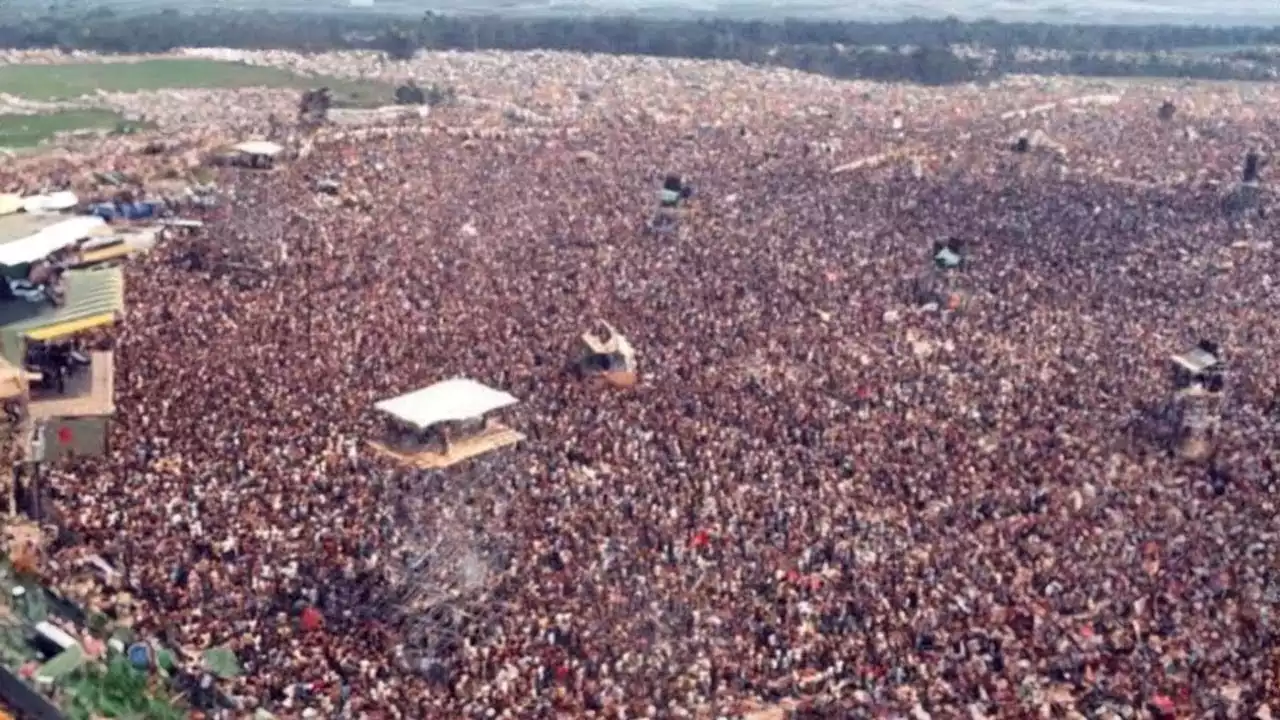Step right up and prepare to dive headfirst into the tumultuous world of music festivals gone awry. From Fyre to Woodstock '99, these iconic events promised a sonic paradise but ended up delivering chaos, disappointment, and even danger. In this eye-opening article, we will take a riveting journey through the 15 most disastrous music festivals in history. Brace yourself as we peel back the curtain on these catastrophic spectacles and unravel the catastrophic missteps and misfortunes that unfolded for all to see.Get ready to witness failed logistics, massive financial losses, and mind-boggling organizational blunders that left attendees stranded, enraged, and in some cases, questioning the meaning of life itself. Through meticulous research and firsthand accounts, we will paint a vivid picture of the chaos that enveloped these ill-fated gatherings.Join us as we explore the astonishing rise and fall of these music festivals, examining the lessons learned and the lasting impact on the industry. Buckle up, because this wild ride is about to begin.
The Allure of Music Festivals and Their Exponential Growth
Music festivals have long held a special place in the hearts of music lovers worldwide. These events offer a unique opportunity to experience the magic of live music, surrounded by like-minded individuals in an atmosphere of celebration and freedom. The allure of music festivals lies in their ability to create unforgettable memories, forge new friendships, and provide a sense of escapism from the rigors of everyday life.
Over the years, music festivals have grown exponentially in popularity, attracting larger crowds and more prominent artists. The desire to be a part of these grand spectacles has driven ticket sales to unprecedented levels, with festival-goers willing to travel far and wide to attend these monumental gatherings. However, with the rapid growth of music festivals, the potential for disaster also increases.
As we delve into the annals of music festival history, we will uncover the dark side of these seemingly idyllic events. From logistical nightmares to safety hazards, the disastrous festivals we will explore serve as cautionary tales, reminding us that even the most grandiose events can crumble under the weight of poor planning and unforeseen circumstances.
Woodstock '99: A Turning Point in Music Festival Disasters
Woodstock '99 was supposed to be a celebration of the iconic 1969 festival, a nostalgic trip back to the peace and love of the counterculture movement. However, what transpired over those three scorching summer days was far from peaceful. Instead, it became a symbol of chaos and debauchery, forever etched in the annals of music festival disasters.
From the moment the gates opened, Woodstock '99 was plagued by a lack of preparation and poor crowd management. The scorching heat, coupled with exorbitant prices for water and food, created a hostile environment for attendees. As tensions rose throughout the festival, they eventually boiled over during the performance of the rap-rock band Limp Bizkit, leading to widespread violence, looting, and sexual assaults.
Woodstock '99 marked a turning point in the perception of music festivals. It exposed the dark underbelly of an industry that had become more focused on profit than the well-being of its attendees. The images of bonfires, destruction, and chaos that emerged from Woodstock '99 served as a wake-up call for festival organizers, forcing them to reevaluate their priorities and take steps to prevent similar disasters in the future.
Fyre Festival: The Rise and Fall of a Fraudulent Event
In the annals of music festival disasters, few events have captured the world's attention quite like Fyre Festival. Promoted as a luxury experience on a private island in the Bahamas, Fyre Festival was supposed to be the epitome of exclusivity and opulence. Influencers and celebrities flocked to promote the event, promising a once-in-a-lifetime experience.
However, when attendees arrived on the island, they were met with a scene that resembled a post-apocalyptic nightmare. The promised luxury accommodations turned out to be disaster relief tents, and the gourmet meals were nothing more than sad cheese sandwiches. The festival was a complete and utter disaster, leaving attendees stranded without proper infrastructure or basic necessities.
Fyre Festival highlighted the power of social media and the dangers of unchecked hype. It served as a cautionary tale for both festival-goers and organizers, exposing the potential pitfalls of relying on influencers and marketing tactics to sell an experience that cannot be delivered. The fallout from Fyre Festival led to legal repercussions, tarnished reputations, and a renewed focus on transparency in event planning.
The Altamont Speedway Free Festival: A Tragic End to the 1960s Counterculture Movement
The Altamont Speedway Free Festival was intended to be a grand finale to the 1960s counterculture movement, a celebration of peace, love, and music. Organized by the Rolling Stones, the festival was meant to recreate the magic of Woodstock. However, what unfolded at Altamont was a stark contrast to the utopian ideals of the era.
Amidst a sea of attendees, tensions escalated when members of the Hells Angels motorcycle gang were hired as security. The combination of drugs, alcohol, and the volatile nature of the crowd led to a series of violent incidents, culminating in the tragic death of Meredith Hunter, a young concertgoer who was stabbed by a Hells Angel while the Rolling Stones performed.
The Altamont Speedway Free Festival served as a sobering reminder that even the most well-intentioned events can spiral out of control. It marked the end of an era, as the counterculture movement gave way to a more cynical and cautious approach to large-scale music festivals.
TomorrowWorld: The Chaos That Ensued at a Popular EDM Festival
EDM (Electronic Dance Music) festivals have gained immense popularity in recent years, attracting a global audience of music lovers eager to immerse themselves in the pulsating beats and electrifying atmosphere. TomorrowWorld, a spin-off of the wildly successful Tomorrowland festival in Belgium, aimed to bring the magic of EDM to the United States.
However, the 2015 edition of TomorrowWorld turned into a logistical nightmare. Heavy rains transformed the festival grounds into a muddy wasteland, rendering many areas inaccessible. Attendees were stranded for hours without shelter, food, or transportation. The lack of communication from festival organizers only exacerbated the chaos, leaving festival-goers frustrated and disillusioned.
TomorrowWorld served as a stark reminder of the importance of contingency planning and effective communication during adverse conditions. It highlighted the vulnerability of outdoor festivals to the whims of nature and the need for organizers to prioritize the safety and well-being of their attendees above all else.
The Great British Music Festival: A Series of Unfortunate Events
The Great British Music Festival was meant to be a celebration of British music and culture, drawing in crowds from all over the world. However, what should have been a joyous occasion quickly turned into a series of unfortunate events, leaving attendees bewildered and disappointed.
From torrential downpours that turned the festival grounds into a muddy quagmire to last-minute cancellations by headlining acts, The Great British Music Festival seemed cursed from the start. Attendees were left stranded without adequate facilities or entertainment, leading to widespread frustration and a tarnished reputation for the festival.
The Great British Music Festival serves as a cautionary tale for festival organizers, highlighting the importance of thorough planning, effective communication, and contingency measures. It reminds us that even with the best intentions, unforeseen circumstances can derail even the most well-planned events.
The Gathering of the Juggalos: An Infamous Gathering with Its Fair Share of Controversies
The Gathering of the Juggalos, an annual music festival organized by the Insane Clown Posse, has earned a reputation as one of the most controversial and polarizing events in the music festival landscape. Drawing in fans of the horrorcore rap duo known as "Juggalos," the festival has become a gathering of like-minded individuals who revel in their shared love for the music and the culture surrounding it.
However, the Gathering of the Juggalos has not been without its fair share of controversies. From clashes with law enforcement to allegations of drug use and violence, the festival has faced numerous challenges throughout its existence. Despite the controversies, the Gathering of the Juggalos continues to attract a dedicated fan base, highlighting the power of music to bring people together, even in the face of adversity.
Roskilde Festival: A Tragedy That Reshaped Festival Safety Measures
The Roskilde Festival in Denmark has long been regarded as one of the premier music festivals in Europe, attracting top-tier artists and tens of thousands of attendees each year. However, in 2000, tragedy struck when nine people lost their lives during a stampede at a Pearl Jam concert.
The incident at Roskilde Festival was a wake-up call for the music festival industry. It prompted a reevaluation of safety measures, leading to the implementation of new crowd control techniques, improved communication systems, and enhanced medical facilities at festivals worldwide. The tragic event at Roskilde served as a catalyst for change, ensuring that the safety and well-being of festival-goers became a top priority for organizers.
Learning from the Past: Steps Taken to Prevent Future Music Festival Disasters
The disastrous music festivals we have explored in this article have left an indelible mark on the industry. They have prompted a collective reflection and a commitment to learning from past mistakes. As a result, festival organizers have taken significant steps to prevent similar disasters from occurring in the future.
Improved planning and logistics, enhanced safety measures, and increased transparency have become hallmarks of well-executed music festivals. Organizers now place a greater emphasis on crowd control, communication, and emergency preparedness. The lessons learned from these disastrous events have reshaped the landscape of music festivals, ensuring a safer and more enjoyable experience for attendees.
In conclusion, the world of music festivals is a double-edged sword. While these events offer the promise of unforgettable experiences and moments of pure euphoria, they also carry the potential for chaos, disappointment, and danger. Through the examination of the 15 most disastrous music festivals in history, we have peeled back the curtain on the missteps, misfortunes, and organizational blunders that have unfolded on grand stages for all to see.
From Woodstock '99 to Fyre Festival, these catastrophic spectacles have left indelible marks on the industry, forever reshaping the way we approach and experience music festivals. The lessons learned from these disasters have led to significant improvements in planning, safety measures, and overall festival management.
As music festivals continue to evolve and captivate audiences worldwide, it is essential to remember the importance of meticulous planning, effective communication, and a commitment to the well-being of attendees. By learning from the mistakes of the past, we can ensure that the future of music festivals is filled with harmony, joy, and unforgettable memories for all who partake in these extraordinary events.


 Last-Minute Valentine's Day Gifts That Will Make Your Girlfriend Feel Extra Special
Last-Minute Valentine's Day Gifts That Will Make Your Girlfriend Feel Extra Special
 Intense Planking
Intense Planking
 Sterling Hayden - Legendary Movie Star
Sterling Hayden - Legendary Movie Star The Ultimate Guide to the Hottest Music Festivals of 2024: Prepare to be Mesmerized!
The Ultimate Guide to the Hottest Music Festivals of 2024: Prepare to be Mesmerized! A Rollercoaster Ride through Music's Journey in 2023
A Rollercoaster Ride through Music's Journey in 2023 The Must-Attend Event: Great American Beer Festival 2023 - What You Need to Know
The Must-Attend Event: Great American Beer Festival 2023 - What You Need to Know Music Extravaganza Await: Your Ultimate Guide to Out of the Woods Festival 2023!
Music Extravaganza Await: Your Ultimate Guide to Out of the Woods Festival 2023! Twisterella Festival 2023: Your Go-To Event for Discovering the Next Big Names in Music
Twisterella Festival 2023: Your Go-To Event for Discovering the Next Big Names in Music Experience the Magic of Oktoberfest Frankfurt 2023: A Celebration of Culture, Bavarian Beer, and Traditions
Experience the Magic of Oktoberfest Frankfurt 2023: A Celebration of Culture, Bavarian Beer, and Traditions AMERICANAFEST 2023: Unforgettable Performances, Memorable Moments, and Why You Can't Miss It
AMERICANAFEST 2023: Unforgettable Performances, Memorable Moments, and Why You Can't Miss It Power of Innovation: A Sneak Peek into ZNA Gathering 2024
Power of Innovation: A Sneak Peek into ZNA Gathering 2024 Festivals of Summer 2024 in Portugal
Festivals of Summer 2024 in Portugal Guide to Punk, Rock & Metal Festivals
Guide to Punk, Rock & Metal Festivals Music Festivals Through the Centuries
Music Festivals Through the Centuries Music Festivals in Greece
Music Festivals in Greece Ultimate R&B Music Festivals to Attend in 2024
Ultimate R&B Music Festivals to Attend in 2024 Shpongle Takes the Stage at DGTL Tel Aviv!
Shpongle Takes the Stage at DGTL Tel Aviv! Tribe of Nova: Uniting Survivors and Finding Comfort in Israel's Trance Music Culture
Tribe of Nova: Uniting Survivors and Finding Comfort in Israel's Trance Music Culture Best Latin Music Festivals of 2024
Best Latin Music Festivals of 2024 Peru Best New Sounds of 2021
Peru Best New Sounds of 2021 Voices from Peru
Voices from Peru Traditional Turkish Music
Traditional Turkish Music Coachella 2024 Lineup Revealed
Coachella 2024 Lineup Revealed